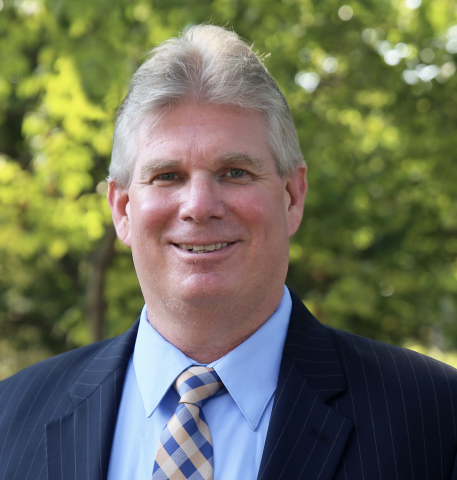Nuclear Power Isn’t What You Think — and That’s a Good Thing

Nuclear fuel pellets are primarily made of uranium dioxide (UO2), a ceramic material. They are typically enriched with uranium-235, an isotope that undergoes nuclear fission to produce energy. (Credit: U.S. Nuclear Regulatory Commission)
“Nuclear” is a loaded, highly charged word. It can conjure images — both real and imagined — of explosive destruction.
Nuclear is also a loaded, highly charged technology. A single fuel pellet the size of a pencil eraser contains as much energy as a metric ton of coal, 150 gallons of oil, or 17,000 cubic feet of natural gas.
The technology’s complex history, along with its vast potential, is why nuclear scientists and engineers often find themselves moonlighting as myth busters. Georgia Tech experts are eager to untangle fact from fiction so nuclear can shine — safely.
“I am really excited about nuclear, but this is a technology that has a lot of myths and misinformation around it,” said Anna Erickson, Woodruff Professor in the George W. Woodruff School of Mechanical Engineering (ME), and leader of the Consortium for Enabling Technologies and Innovation (ETI), which is focused on nuclear technology.
“Concerns about nuclear weapons, accidents, and waste have overshadowed nuclear energy’s potential as a clean, carbon-free technology,” she added.
Here, Georgia Tech researchers share what nuclear is, why it’s important, and why its moment is now.
What Is Nuclear?
“Nuclear, as indicated by its name, is focused on the nucleus within an atom, but also the atom as a whole,” said Steve Biegalski, ME professor and chair of the Nuclear and Radiological Engineering and Medical Physics Program. “From an engineering perspective, we're looking at how we can use the physics of an atom — and the physics of a nucleus — to solve different scientific and societal problems.”
In 1938, German and Austrian scientists discovered that breaking apart an atom’s nucleus creates energy through fission. Many aspects of nuclear science, however, were advanced through the Manhattan Project during World War II, in which the U.S. developed the atomic bombs it later dropped on Hiroshima and Nagasaki, Japan. This historical association has likely played a significant role in shaping the negative perception of nuclear technology.
But nuclear science isn’t only about international power and weapons, Biegalski said. Advances in nuclear science have contributed to life-saving cancer therapies, cutting-edge heart scans, and on-demand X-ray technologies.
Safe levels of radiation are all around us — for example, our imported fruits and vegetables are treated with radiation when they enter the country. Even kitty litter is radioactive — not very, but detectable by modern sensors.
“You might have slightly elevated radioactivity for a short while after you eat a banana in the morning,” Erickson said. “Our bodies have evolved to live with radiation.”
AI Has Entered the Chat
Lately, Erickson has been getting calls from major technology companies with questions about how to power data centers. She isn’t surprised — nuclear energy is widely being discussed as the way to power the AI revolution.
“Today’s energy needs are very different than they were in the past, and consistent, reliable, and independent electricity production is necessary — especially for the technology sector,” Erickson explained.
“At this stage, it’s not a question of whether nuclear energy can meet those demands, but how quickly we can make it a reality,” she added.
One of nuclear’s most distinguishing features is its power density, or how much power is produced by volume of raw material. Another defining feature is its reliability. Wind and solar are weather-dependent and provide power intermittently. Nuclear can supply power around the clock, and data centers require that level of consistency.
“There are discussions about developing a number of data centers just outside of Atlanta, and those will require full-size nuclear power plants to power them,” Biegalski said. “When we look at electricity production, these facilities need power 24/7, 365 days a year. Nuclear power can supply that, and wind and solar simply cannot.”
Great Power, Great Responsibility
According to Erickson, the nuclear reactors in use today are far more advanced than those associated with past disasters like Chernobyl and Three Mile Island.
New nuclear plants are designed with great efficiency in mind. Coal must be supplied continuously, whereas nuclear can be loaded once and run for years.
In addition to dispelling misinformation, nuclear experts are also knowledgeable about nuclear nonproliferation and nuclear security. Georgia Tech is a leader in these areas. Experts like Erickson and Biegalski are regularly tapped to help design new reactors that are popping up across the country.
The Georgia Tech-led nuclear consortium, ETI, assesses how emerging technologies help or hurt nuclear nonproliferation efforts. Nuclear nonproliferation is the global effort to minimize the spread of nuclear weapons, technology, and development.
“One of our main missions is to understand expansion of civilian nuclear power through the lens of nuclear safeguards and nonproliferation,” Erickson said. “Specifically, we want to know how we can best prevent misuse and mishandling of nuclear materials and keep nuclear facilities safe, while also investing in advancing nuclear technology.”
A Shift in Public Opinion
Despite the popular culture — think Homer Simpson’s nuclear plant job handling green slime — the public is also becoming better informed about nuclear power’s relative safety, especially compared with other energy sources.
In early 2025, nearly 6 out of 10 Americans supported increased development of nuclear energy. But why are Americans gradually coming around to the idea?
Erickson may have the answer. “The technology’s potential is catching on across the globe,” she said. “In France, 70% of their electricity comes from nuclear energy.”
For one of her first research projects as a young student, Erickson analyzed what went wrong with the Chernobyl reactors. She understands why people can be wary of nuclear technology.
“Despite the uptick in support for nuclear, people still have concerns we need to answer, rather than just telling people to trust the experts,” Erickson said. “Talking to people is critical in promoting this technology and making sure we keep the public’s trust in this.”

